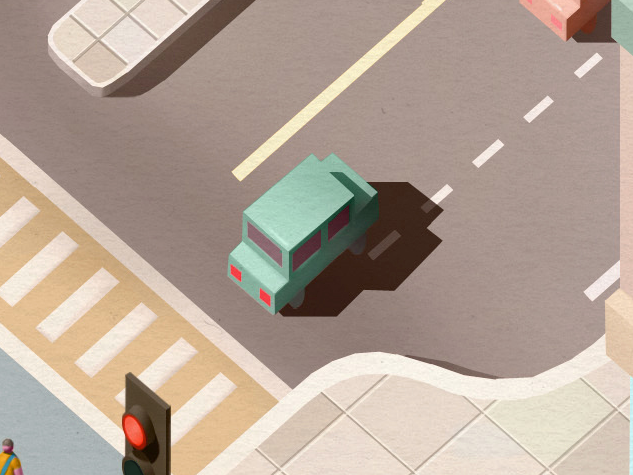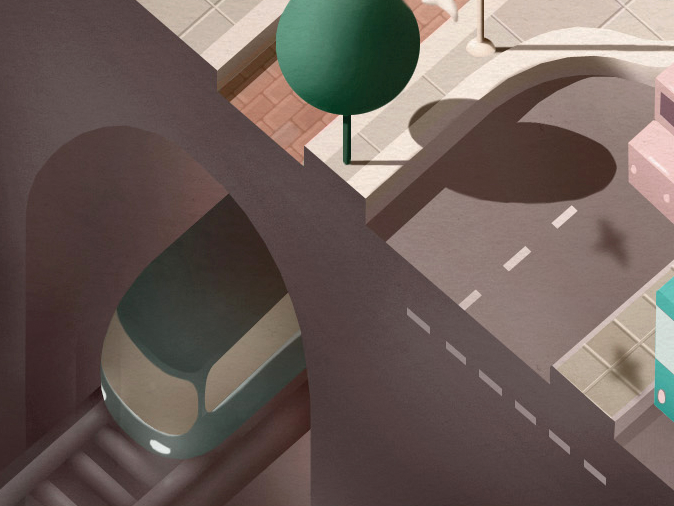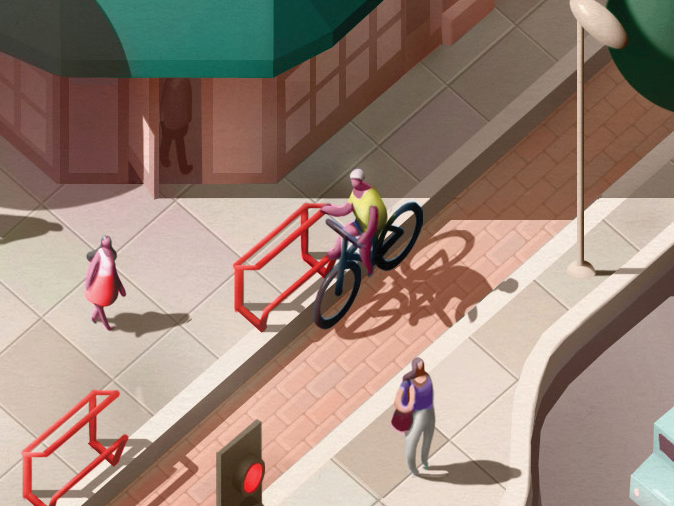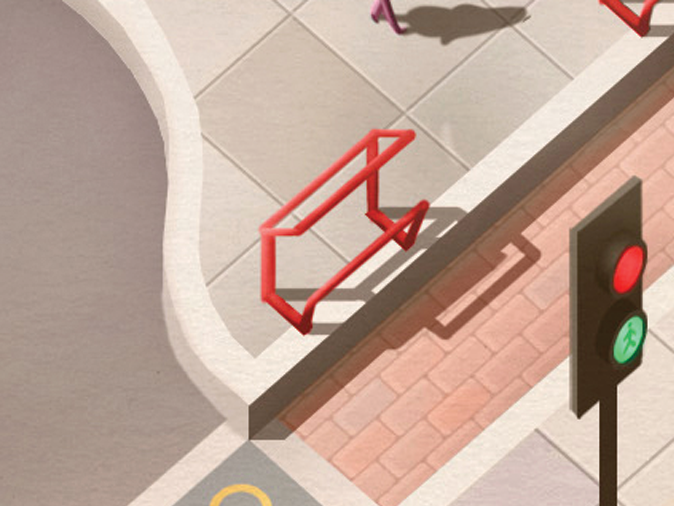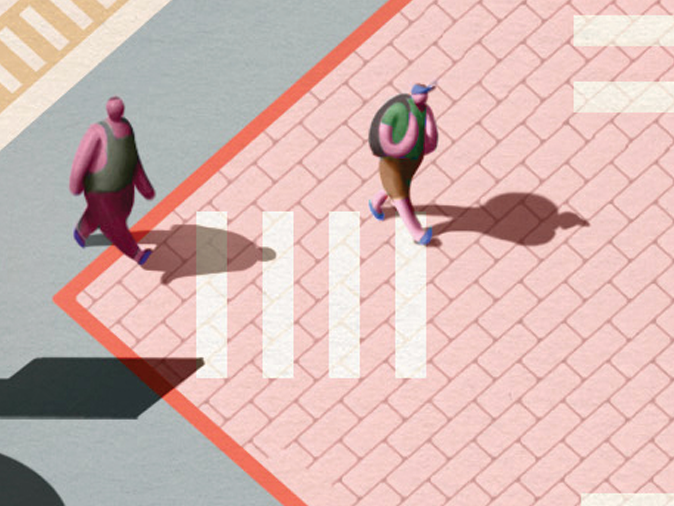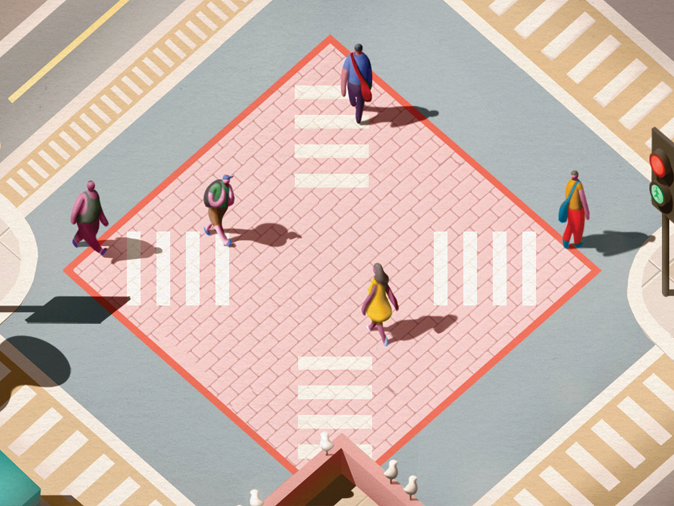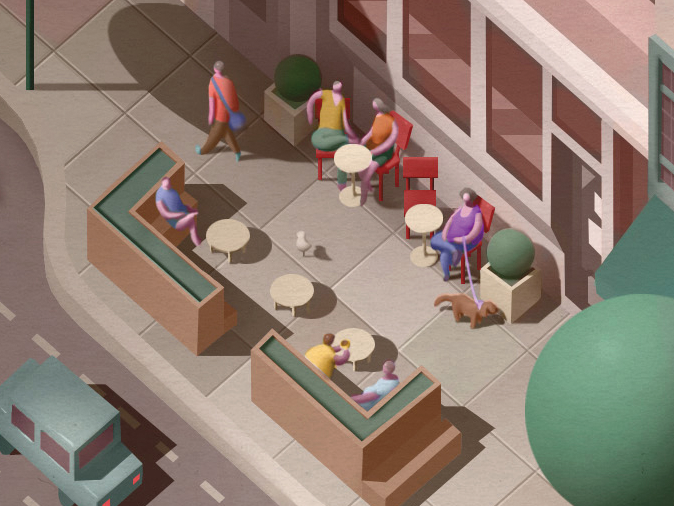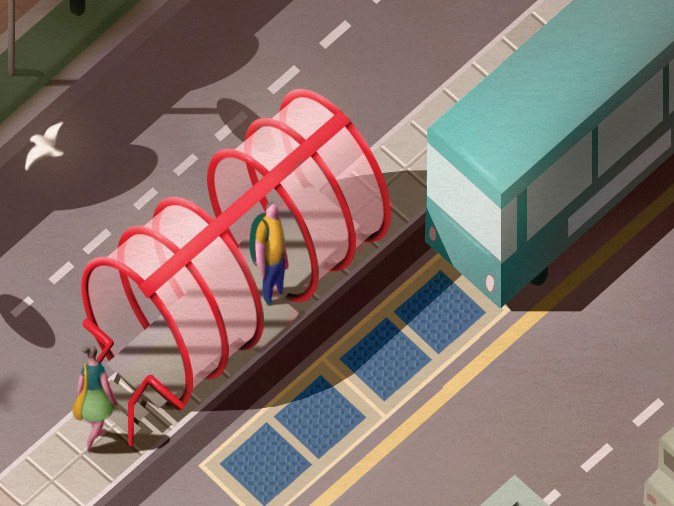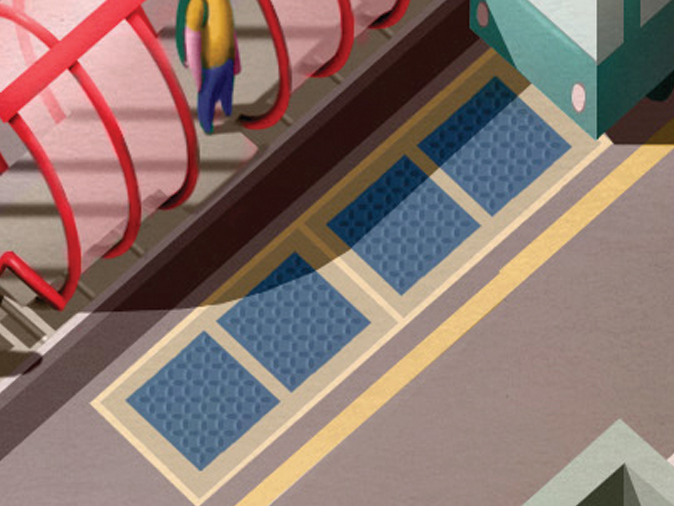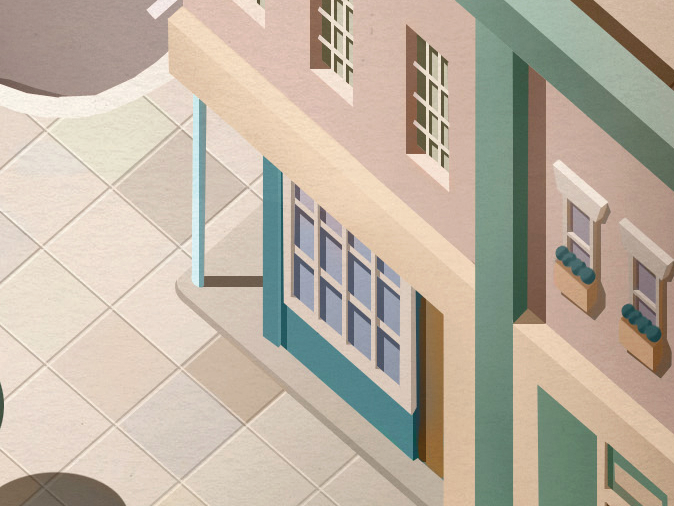IF YOU THINK the only purpose of intersections is to move cars past each other, you solve problems like a plumber: with bigger pipes. But wide, barren streets full of traffic don’t make a livable city. One solution would be nothing. No lights, no curbs, no sidewalks—just colored pavers. It works. Accidents decline, traffic slows, and property values rise. “You’ll never do as good a job as two people using body language and eye contact,” says Sam Goater, a senior associate at the Project for Public Spaces. But don’t rip out the infrastructure just yet. Urban designers have a good set of tricks to turn a city intersection into something more like a plaza and less like a freeway interchange. Cars pass, people walk, bikers bike, and everyone’s lives flow more smoothly.
01: Self-Driving Vehicles
Studded with sensors and humming with AI, autonomous cars could slash death rates at intersections while eliminating traffic signals altogether.
02: Traffic Sensors
Induction loop sensors detect the metal bulk of a car and talk to signal lights. They’ve been in use since the ’60s and are crucial to traffic flow.
From our partners:
03: Bump-Outs
Squeeze the roadway as it nears the intersection and traffic slows to navigate the passage.
04: Protected Bike Lanes
Expect to see more of these—the US Department of Transportation recently endorsed the design as a way to create “low-stress bicycle networks.”
05: Bike Rails
Bike rails may be just a few metal tubes welded together, but for any cyclist who has waited on tiptoes for the light to change, they’re a welcome addition.
06: Bike Signals
A light timed for cyclists gives them just a few seconds’ head start, but that’s enough to get up to speed before traffic roars to life.
07: Speed Tables
Raising the crossing puts drivers at eye-height with pedestrians. “It makes it obvious that pedestrians rule,” says Steve Mouzon, an architect and urbanist.
08: Scrambles
By stopping all traffic at once, scramble crossings provide better separation of cars and people, allowing foot traffic to move in any direction—even diagonally—in relative safety.
09: Parklets
By reclaiming street parking, parklets offer pedestrians a bit of respite that, when well designed, can feel like a swanky sidewalk café, Mouzon says.
10: Trees
“One thing traffic engineers try to get rid of as quickly as possible is street trees,” Mouzon says. Bad idea. For a walkable street on a hot day, the more trees, the better.
11: Dedicated Shelters
On many bus routes, shelters protect waiting riders from the elements. Boarding goes faster if fares are collected on the street, not on the bus.
12: Induction Charging
Overhead wires mar the streetscape and don’t give bus drivers much leeway. Chargers embedded in the pavement can juice up electric buses as they roll.
13: Cool Stations
Subway stops often feel like caves—which can be great! Stockholm embraces subterranean chic, leaving bedrock exposed at some stops.
14: Sidewalk Cafes
Cute eateries are the key to a great street. “There are few silver bullets in urbanism,” Mouzon says, “but this is one of them.”
15: Corner Stores
The best use for a corner is, well, a corner store—anything people visit once a week or more. Bonus points to proprietors who face displays to the street and stock them with enticing stuff. One winner? Wine.
16: Third Places
“Your first place is home. Your second is work. The third place can be a coffee shop or a pub,” Mouzon says. It gets people out on the sidewalks.
This feature was written by Tim De Chant and illustrations by Mike Lee. Originally appeared in Wired.








